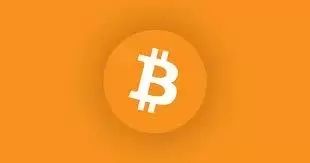 |
|
 |
|
 |
|
 |
|
 |
|
 |
|
 |
|
 |
|
 |
|
 |
|
 |
|
 |
|
 |
|
 |
|
 |
|

Institutions are adopting utility-based protocols at an increasing rate, with XRP, Stellar, and Hedera playing a key role in transforming the global financial system, according to entrepreneur and writer Max Avery.
In a series of X posts, Avery highlights the contributions of experts like Hiromi Yamaoka, a former official at the International Monetary Fund, in the pursuit of an effective financial system. According to Avery, Yamaoka has created frameworks to facilitate collaboration between central banks and private firms.
This collaboration combines the technological efficiency of private companies with the trust and control of Central banks. Private companies like Constellation, Hedera, Stellar, and Ripple aim to innovate with programmable solutions.
Meanwhile, Central banks offer supervision and issue stable assets, such as Central Bank Digital Currencies (CBDCs).
This is done by a joint effort. Central banks issue stable assets, like CBDCs, and provide oversight. Private entities, like Ripple, Stellar, Hedera, and Constellation, seek to innovate with programmable solutions. This partnership combines banks’ trust and control with private…
— Max Avery (@realMaxAvery) December 29, 2024
Institutions are turning to XRP for its ability to facilitate instantaneous and cheaper cross-border payments, eliminating the need for pre-funded accounts and offering on-demand liquidity and quick currency bridging.
Moreover, Avery highlights the XRP Ledger's (XRPL) capabilities beyond being a payment system. He points out how the blockchain can tokenize assets like real estate and carbon credits. The XRPL also has a decentralized exchange for direct asset trading and Hooks for adding lightweight smart contracts to expand its utility.
XRPL also distinguishes itself from other blockchains in terms of energy efficiency. Unlike Bitcoin mining, XRPL utilizes a consensus mechanism that is faster, greener, and scalable. It demonstrates that innovation in finance is possible without compromising the environment, providing a sustainable way forward.
Like XRP, Stellar's native token, XLM, also aims for financial inclusion. The network charges less for small transactions and supports scalable private CBDCs, aiding the underbanked and enabling global economic access.
Another popular utility-based network is Hedera, which is also shaping the future of financial systems. Hedera's native asset, HBAR, enables low-cost, high-speed transactions and supports Decentralized Applications (dApps).
Additionally, HBAR is utilized for staking, which supports network governance and security, providing an effective and scalable solution for a range of financial services.
Interestingly, these networks also complement each other. For example, while XRP transforms institutional finance, XLM ensures access for all, covering the entire financial spectrum and creating a complete solution for modern financial systems.
Meanwhile, the adoption of utility-based networks is gaining momentum. For instance, Ripple's partnerships with banks are growing, as CNF reported, showing Ripple's increasing integration into the global financial system.
As regulation improves, Avery anticipates a skyrocketing adoption.
Avery concludes that the future of utility is unfolding now, despite some people's skepticism.
“These networks are leading the shift by blending their advanced technology with real-world utility. It’s the present, taking shape in real-time, whether people want to believe it or not,” he notes.
부인 성명:info@kdj.com
제공된 정보는 거래 조언이 아닙니다. kdj.com은 이 기사에 제공된 정보를 기반으로 이루어진 투자에 대해 어떠한 책임도 지지 않습니다. 암호화폐는 변동성이 매우 높으므로 철저한 조사 후 신중하게 투자하는 것이 좋습니다!
본 웹사이트에 사용된 내용이 귀하의 저작권을 침해한다고 판단되는 경우, 즉시 당사(info@kdj.com)로 연락주시면 즉시 삭제하도록 하겠습니다.


























































